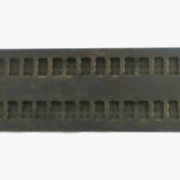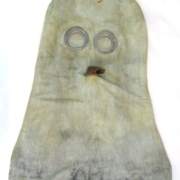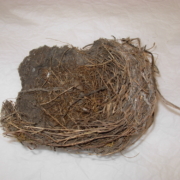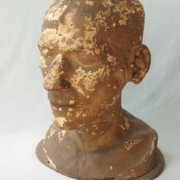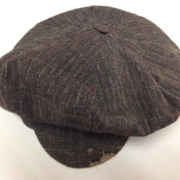Object of the Month – June 2023
This is the cast skin / exoskeleton (exuvia) of a dragonfly larva, found in Elsenham in August 2005. The shape of the eyes and the length (40mm) suggest it’s a hawker dragonfly, while the finder’s description of the adult dragonfly being green and yellow means it is probably a southern hawker, which are common in July and August.

Dragonfly exuvia © Saffron Walden Museum
These dragonflies spend 2 or 3 years as a larva, or nymph, living underwater, before coming above water to shed their skin and emerge as an adult.

Southern hawker dragonfly by Tom Wiersma via Wikimedia Commons.
Dragonflies, like all insects, have a hard exoskeleton which does not grow with them. After hatching from an egg, dragonfly nymphs gradually grow into adults through a series of moults to shed their skin, which allows it to grow in size each time, emerging as an adult directly from the last moult.
The nymphs look similar to the adult, with a long body and six legs. Nymphs in the last stages of growth have wing buds that you can see on this specimen.
This method of growth, through nymphs with wings developing on the outside, is called incomplete metamorphosis.
This is different from other insects including flies and butterflies, which hatch as maggots or caterpillars. This is the larva of the insect, and it looks very different from the adult. The larva in these insects also has to moult to increase in size, but the final moult is different. It creates an inactive pupa (called a chrysalis in butterflies) where the final radical transformation into the adult takes place. This method of growth from larva to pupa to adult is called complete metamorphosis.
Visit the Museum to learn more about the two types of metamorphosis in the Discovery Centre, and take a closer look at two exuviae from our Malaysian stick insects.

Exuvia of female Malaysian stick insect © Saffron Walden Museum

Exuvia of male Malaysian stick insect © Saffron Walden Museum
Image credit:
Female Southern Hawker – Tom Wiersma, CC BY-SA 4.0 https://creativecommons.org/licenses/by-sa/4.0, via Wikimedia Commons. Accessed 25.5.2023.




